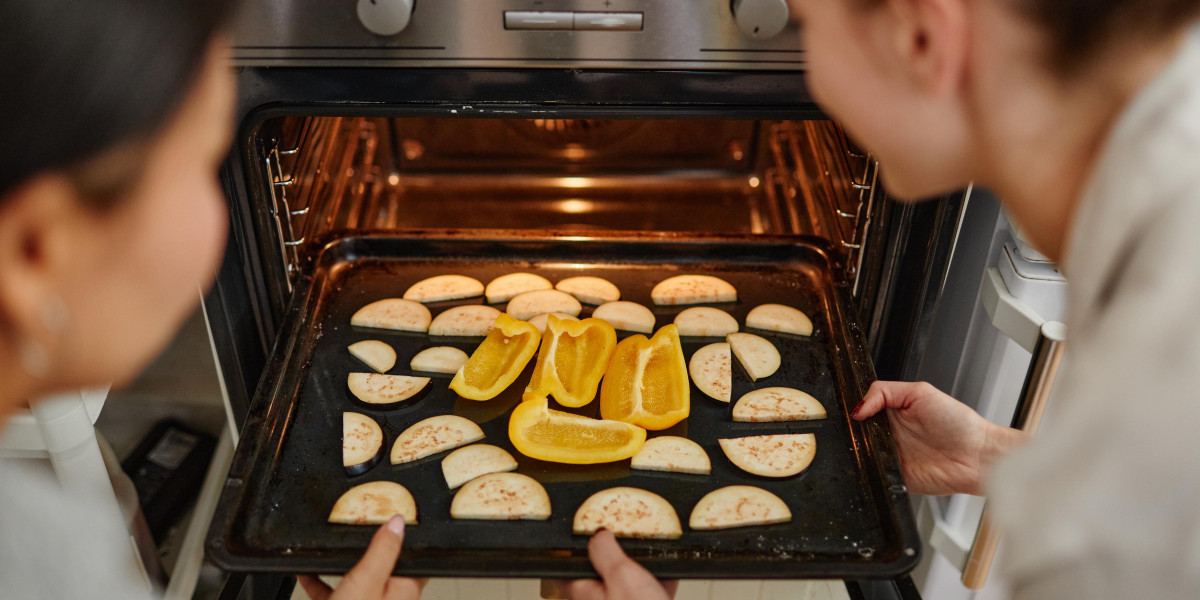Understanding In-Built Ovens: A Comprehensive Guide
In the world of modern kitchen design, built-in ovens have actually increased to prominence, mixing performance with aesthetic appeals. Their seamless combination into cabinetry supplies a streamlined appearance, making them significantly preferred by property owners and cooking enthusiasts alike. This post checks out the numerous functions, benefits, installation considerations, and popular types of Bosch Stainless Steel Built-In Electric Oven ovens, together with responding to some often asked questions.

What is an In-Built Oven?
An inbuilt oven, frequently referred to as a Haden 60cm Electric Built-In Oven with Fan Assist oven, is a kitchen home appliance created to be installed within cabinetry, instead of as a freestanding unit. This configuration enables a more advanced and orderly kitchen design while optimizing offered space. Built-in ovens can be found in different sizes, designs, and functionalities to match different cooking needs and choices.

Advantages of In-Built Ovens
The benefits of installing an inbuilt oven extend beyond mere visual appeals. Here are some key benefits:
Space Efficiency: Built-in ovens are designed to fit comfortably within kitchen cabinetry, making them ideal for compact areas. This design leaves counter space complimentary for meal preparations.
Customizable Design: Homeowners can select from a range of styles and finishes to complement their kitchen design, improving the general look of the space.
Improved Functionality: Many built-in ovens are equipped with sophisticated cooking technology, supplying functions such as convection cooking, steam cooking, and self-cleaning functions, which enhance cooking effectiveness and adaptability.
Ergonomic Height: Installing an oven at eye level lowers the requirement to flex down, making it much easier to check food and handle dishes without straining the back.
Improved Safety: Built-in ovens can include security features such as cool-to-the-touch surfaces and kid locks, which can be especially important in homes with children.
Kinds Of In-Built Ovens
Inbuilt ovens been available in numerous types to cater to different cooking requirements. Below is a comparison of common types:
| Type | Description | Pros | Cons |
|---|---|---|---|
| Single Oven | A traditional Russell Hobbs 60cm Stainless Steel Electric Oven that cooks from one space | Space-efficient, simpler to utilize | Restricted cooking capacity |
| Double Oven | Two separate oven compartments for diverse cooking | More cooking area, flexibility | Higher cost, uses up more space |
| Compact Cookology 72L Electric Oven & Microwave Combo | Smaller ovens suitable for small kitchen areas or as a 2nd oven | Space-saving, flexible | Limited capability |
| Steam Oven | Uses steam for cooking, maintaining wetness | Healthier cooking options | Normally more costly |
| Wall Oven | Built into the wall, available in single or double setups | Conserves flooring space | Installation intricacy |
Functions to Consider When Choosing an In-Built Oven
When picking an inbuilt oven, a number of functions need to be considered:
Size: Measure your kitchen area and cabinets to make sure the oven fits effectively. Typical widths for Cookology 60cm Black Built-in Electric Oven ovens range from 24 inches to 30 inches.
Cooking Methods: Determine the cooking approaches you choose-- standard, convection, or steam. This choice will substantially influence your cooking design and the oven's abilities.
Energy Efficiency: Look for ovens with high energy efficiency scores. These models conserve money on energy expenses and are better for the environment.
Control Options: Evaluate the control interfaces. Some models offer wise functions enabling remote cooking control and tracking via smart device apps.
Safety Features: Ensure the oven features essential security features, particularly if kids will be present. Lock-out mechanisms and cool outsides are important improvements.
Installation Considerations
Appropriate installation is critical for the optimum performance of an inbuilt oven. Here are some installation factors to consider:
- Ventilation: Ensure correct ventilation to get rid of smoke and odors. Consult local building codes relating to kitchen ventilation requirements.
- Electrical Requirements: Built-in ovens typically need a dedicated electrical circuit. Have a competent electrician evaluate price and security.
- Expert Installation: While DIY may be appealing, hiring an expert installer makes sure the oven is fitted securely and safely.
Frequently Asked Questions About In-Built Ovens
What is the difference in between a built-in oven and a freestanding oven?
Built-in ovens are created to be set up within cabinetry, whereas freestanding ovens can stand alone and normally integrate oven and cooktop in a single appliance.
Can I install a built-in oven myself?
While DIY setup is possible, it is typically advised to employ an expert to make sure security and adherence to local building regulations.
Are inbuilt ovens worth the financial investment?
Yes, in-built ovens generally use enhanced looks, advanced functionality, and effective usage of space compared to standard freestanding models.
What upkeep do inbuilt ovens need?
Routine cleansing, examining seals, and guaranteeing proper ventilation are important upkeep tasks. It's a good idea to follow the manufacturer's directions for particular care standards.
Just how much does an in-built oven usually cost?
Rates can differ considerably based upon functions, brand name, and type, but built-in ovens typically range from ₤ 700 to ₤ 3,000 or more.
In-built ovens provide a mix of elegance and usefulness, making them an excellent option for both new building and constructions and kitchen remodels. Understanding the types, functions, and setup factors to consider can empower property owners to make educated decisions about which built-in oven best fits their needs. As culinary trends progress and kitchen design becomes more sophisticated, in-built ovens will continue to play a substantial role in modern cooking areas, merging cooking with style and functionality.








